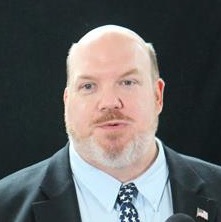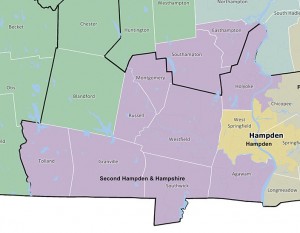2013 An Election Odyssey: Time to See the Don…
UPDATED 11/9/13 2:17PM: For grammar
This is the first part in a series on analyzing the results of the 2013 election.
On balance liberals did fairly well in Tuesday’s election. Both of Boston’s mayoral candidate were thought to be progressives, but Rep. Martin Walsh was seen a bit safer for the left. Voters in West Springfield swept away Greg Neffinger, oft-described as a conservative, for a centrist and unenrolled Edward Sullivan. The Paper City kept Alex Morse. Nevertheless, the one partisan race on ballot went well for Republicans.
Westfield’s Republican Rep Don Humason won the special 2nd Hampden and Hampshire Senate election, left open by Michael Knapik’s resignation in August to take a job at Wesfield State. There is no sugarcoating that this was a missed opportunity for Democrats, but the punditocracy seems to be missing a lot of structural components of the race that heavily favored Humason. Knapik’s timing for his resignation froze out Democrats who were running for local office and leaving Holyoke ward councilor David Bartley and outgoing Easthampton Mayor Mike Tautznik Bartley prevailed in the October 8 primary,.
The seat has changed since Shannon O’Brien held it twenty years ago, but it is also worth remembering that it was the year of Bill Clinton’s victory in 1992 that a Democrat was last elected. Turnout in Holyoke and Westfield’s most Democratic corners would have peaked then.
Some like Matt Barron suggest that the problem was Democrats being lazy. That seems unlikely for several reasons. The first is that with the exception of Easthampton and Holyoke, none of the communities in the district are Democratic strongholds or easily cajoled into strongholds in regularly scheduled elections. Both Agawam and Westfield can go blue, but it requires work and building. Plus both voted against Dems for governor in 2010 and senator in 2012 and 2013.
Westfield was essentially off the table because it was Humason’s stomping grounds. As stated before, Knapik’s gift kept on giving by leaving Democrats either in the primary or the general (our regularly scheduled generals are quite short), unable to build an organization for the nominee. Democrats could not win Westfield against Humason, but more time to build might have sliced off enough of that city to win.
The other fact is that activists have to be motivated. The activists, who tend to lean left, as they do lean right for Republicans, can hold their noses down ticket if there is somebody exciting like an Elizabeth Warren or a Deval Patrick leading the ballot. However, with Bartley at the top of the ticket, there was simply no excitement.

David Bartley (via holyoke.org)
It was palpable talking to activists and dedicated politicos that Bartley was not electrifying. They put up a brave face and vehemently did not want Humason, but it was not enough. Bartley was a nice person, but what hints of policy he sprinkled out were nothing thrilling. He vaguely promised more resources for Western Mass and largely opposed taxes. Try as other Democrats like, the anti-choice, anti-marriage equality Don Humason could not be hyped into a fire-breathing tea partier.
Then we discovered only a week out that Bartley had actually contributed a token sum to Jeffrey Stanek, the vaguely conservative opponent of incumbent Holyoke mayor Alex Morse. The contribution came before the October primary, but after the Holyoke preliminary. This had to cause discomfort within the side of Holyoke that was working so hard to retain Morse and implicitly being expected to back Bartley even as raw numbers would inevitably and rightly prove lots of Stanek supporters were Democrats. After all, Bartley was an old-school figure in the mold of his father, perhaps even “Old Holyoke,” many of whom are Democrats.

Win or lose, high Morse turnout would benefit Bartley too despite the latter’s suspect support for the eventually successful incumbent. (via Facebook/Morse campaign)
If you dig a little deeper into the numbers, you see that Holyoke and Westfield cancelled each other out. Yet, Humason actually plucked more votes out of Holyoke than Bartley did out of Westfield despite higher turnout, surprisingly, in Holyoke. With a huge effort designed to reelect Morse at work, where liberals and unreliable Democrats being in the campaign’s cross hairs, can anybody really say with a straight face nobody was working to get out the vote?
There is another factor to consider as well. Barron is correct to say that Bartley did not hit Humason on his record, but except on social issues it is not clear how that would have left voters with any contrast. Bartley did nothing to distinguish himself on policy and instead relied heavily on being the son of a former Speaker of the House. What was David Bartley for except better things for Western Massachusetts?
To be fair Humason did exactly the same thing. Had Humason defined himself (Bartley’s paper trail is too small to define him), the Westfield Republican would be asking for his record thrown back at him. However, without any definition, the race came down to personality and experience. On that front, Humason won experience handily. Ten year legislator versus half-term city councilor is an easy choice.
Papa Bartley’s name may have been enough to get through a primary, where it could swamp a fellow Dem in Holyoke. However, it does little for those outside of Holyoke who may know the elder Bartley better as Holyoke Community College’s president than as a politician. According to records with the Secretary of the Commonwealth, the last time that Bartley was on a ballot he lost to John Kerry in the 1984 US Senate primary.

The best and most substantive, albeit politically, ad/mailer of Bartley’s campaign (via Facebook/Bartley campaign)
Finally, the power of Democrats elsewhere in places like Agawam was muted by the circumstances of the elections there. On paper, the ginned up turnout of municipal elections (as opposed to a random date for a special election) benefited the Democrat. Bartley-friendly cities like Easthampton and Holyoke had competitive municipal elections, while only one city in Humason’s column had an election.
Agawam did have elections and it was Agawam where Humason ultimately won. While Agawam has listed to the right in recent years, its most prominent political figures, Mayor Richard Cohen and former Rep. Rosemary Sandlin are Democrats. The two, known for their feuding, were both featured in arguably Bartley most effective ad agreeing on Bartley’s candidacy.
However, Cohen was unopposed for reelection and Sandlin herself was not on the ballot, limiting whatever turnout they could fuel in Agawam. Partisans for each could have padded Bartley’s numbers and diminished Humason’s win there.

(via Facebook/Humason campaign)
Paul Santaniello, a Longmeadow Select Board member and a Republican quoted in The Republican (neither his nor Barron’s role as strategist seems very relevant given their limited appearance in the OCPF reports of winning candidates), rightly pointed to Humason’s skill at retail politics. Absent definition from Bartley, Humason’s gregarious and outgoing personality won again.
Santaniello also cited local issues being highlighted as we did, but this is more a function of the small election timeline. If this campaign lasted longer, there would have been more opportunity to differentiate the often non-partisan municipal matters from the very-partisan state matters.
There is an alternative meme that Democrats knew their chances were limited and they just wanted to bruise Humason for future campaigns, but since no blows were landed on the senator-elect it is hard to see that effort as terribly successful.
Humason should not and cannot get comfortable. Knapik could somehow keep the Easthampton-Holyoke belt sedated. Humason, despite working for Knapik before being a rep, has never as a legislator had to deal with areas as liberal as Easthampton or as Democratic as Holyoke. As some in Holyoke have observed, 1/3 of votes cast in 2012 when Knapik was unopposed were left blank leaving a sizeable base from which to build.
If Humason remains in the Senate as he was the House, he will face opponent after opponent and Democrats will not make the same errors or face the same headwinds they had this year. They may not get him in a gubernatorial year, but in a presidential year with Hillary Clinton at the top of the ticket, Humason would either need to changeup his voting habits or update his resume.


1 thoughts on “2013 An Election Odyssey: Time to See the Don…”
Comments are closed.